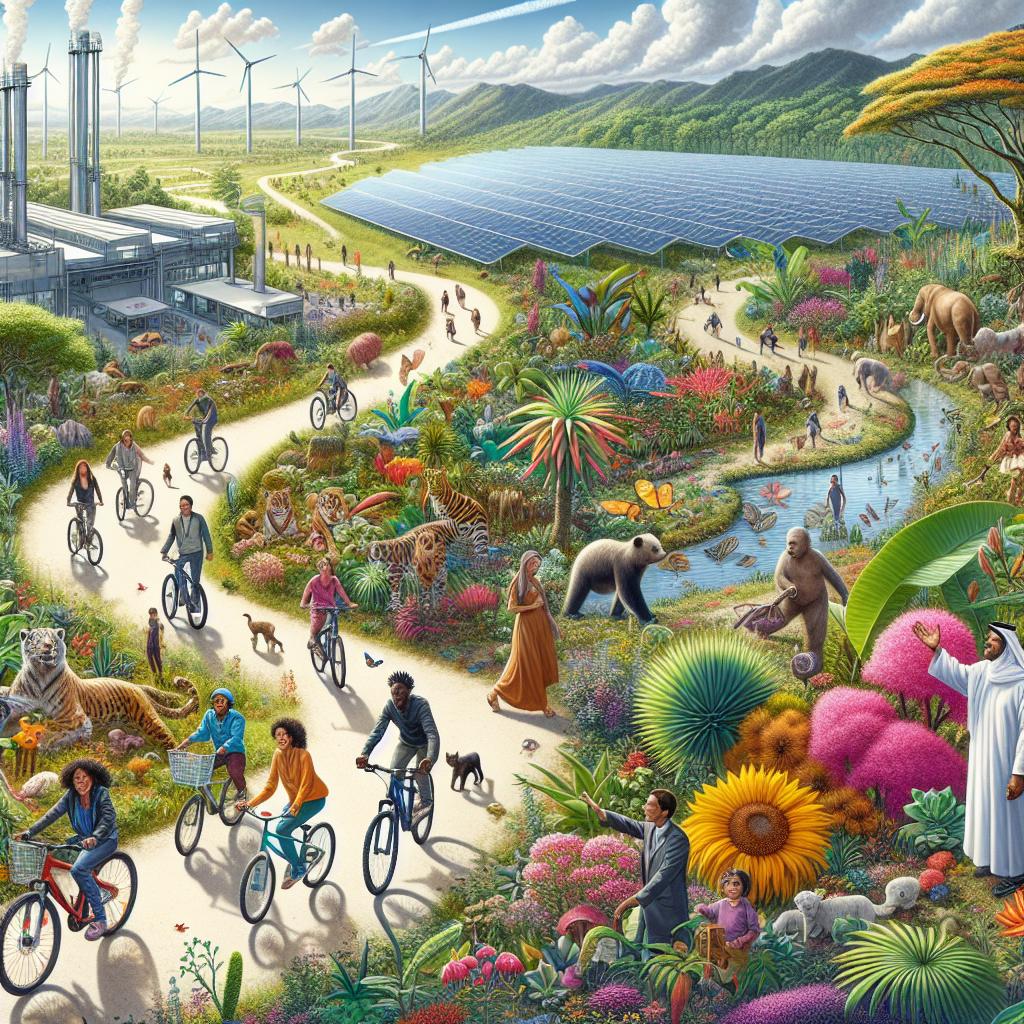Revolutionizing Our Future

As the world becomes increasingly aware of the pressing environmental challenges we face, it's crucial that we take decisive action to create a sustainable future. In this article, we'll explore the interconnected themes of sustainable transportation, biodiversity, sustainable production and consumption, circular economy, food security, and solar energy.
Let's begin with sustainable transportation. As one of the leading contributors to greenhouse gas emissions, the transportation sector must undergo a radical transformation if we're to meet our climate goals. Electric vehicles (EVs) and public transportation powered by renewable energy are key solutions. For instance, cities like Oslo, Norway, have already committed to banning the sale of new fossil fuel cars by 2025, opting instead for a fleet of electric and hydrogen fuel cell vehicles.
However, the transition to sustainable transportation goes beyond just vehicles. Incorporating biodiversity into our transportation infrastructure, such as green roofs, wildlife crossings, and vegetated medians, can help mitigate the negative impacts on ecosystems. Moreover, using biofuels derived from sustainable sources, like sugarcane ethanol or biodiesel from recycled cooking oil, can further reduce emissions.
Now, let's discuss biodiversity. With the loss of habitat and the rapid extinction of various species, it's essential that we prioritize biodiversity conservation. One way to do this is by implementing a circular economy. Instead of relying on a linear take-make-dispose mentality, a circular economy keeps resources in use for as long as possible, reducing the demand for raw materials and minimizing waste.
Consider the fashion industry, a significant contributor to both environmental degradation and the loss of biodiversity. By adopting a circular economy model, designers and brands can reduce waste through recycling, reusing, and upcycling textiles. For example, Patagonia's Worn Wear initiative encourages customers to repair and reuse their clothing, keeping it out of landfills and reducing the demand for new textiles.
Furthermore, a circular economy can contribute to food security. According to the Food and Agriculture Organization of the United Nations, around one-third of all food produced for human consumption is lost or wasted each year. By implementing a circular food system, we can reduce waste by recovering and redistributing surplus food, repurposing food waste for animal feed or industrial uses, and regenerating land through regenerative agriculture practices.
Speaking of food security, solar energy plays a vital role in ensuring a sustainable food production system. Solar-powered irrigation systems can help farmers access water, even in regions with unreliable power grids. For instance, in India, the Solar Water Pumping Program has provided over 21,000 solar pumps to farmers, enabling them to irrigate their fields and increase their crop yield.
Lastly, solar energy is crucial for powering our homes, businesses, and public infrastructure. The rapid decline in solar panel costs and the increased availability of renewable energy storage solutions, like batteries, are making solar energy more accessible and affordable than ever. In fact, according to the International Energy Agency, solar is expected to become the world's largest source of electricity by 2025.
By embracing sustainable transportation, prioritizing biodiversity, adopting circular economy principles, focusing on food security, and harnessing the power of solar energy, we can create a more sustainable and equitable future for all. It's time to unite these themes and work together to make a difference. After all, the future belongs to those who prepare for it today.




